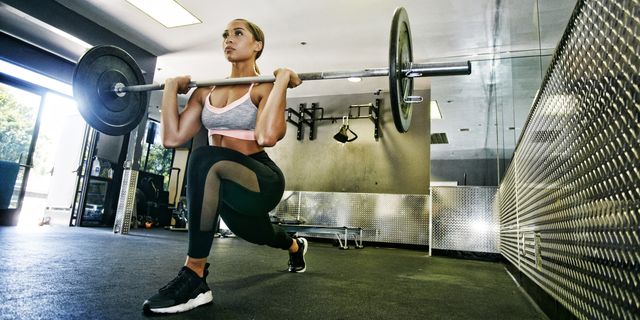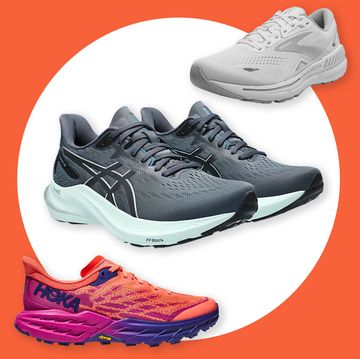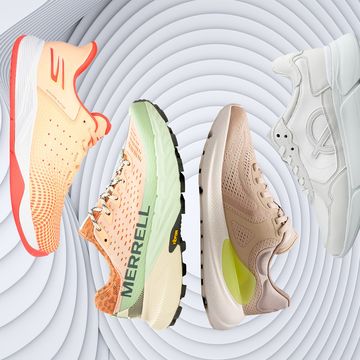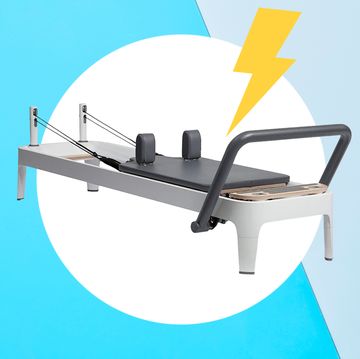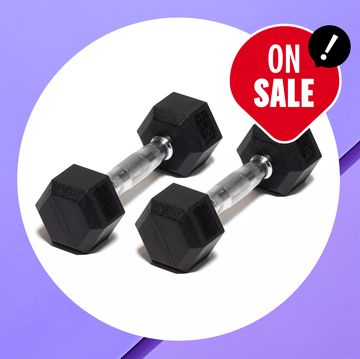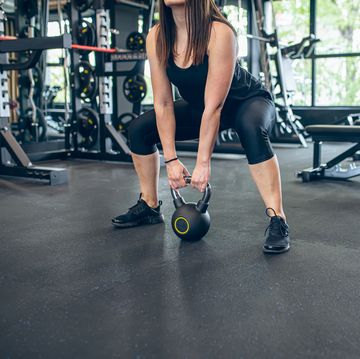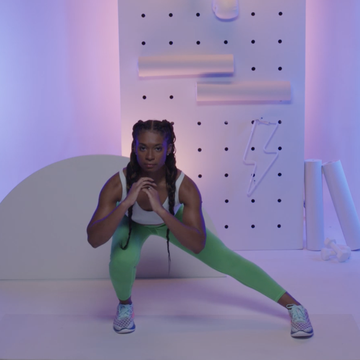1EPOC is the result of ATP production.
 LumiNola//Getty Images
LumiNola//Getty ImagesOn a cellular level, your workouts are powered by a chemical compound called adenosine triphosphate (ATP), which is what essentially supplies the energy necessary for metabolism. "The more ATP [you use working out], the more calories needed to help produce more ATP for recovery," says Steve Proniewych, exercise physiologist at High Performance Physical Therapy.
2High-intensity exercises generate a greater EPOC effect than lower-intensity ones.
 FatCamera//Getty Images
FatCamera//Getty Images"The higher the intensity of the exercises, the harder you will stress the body," says Proniewych. "This would mean you will need more ATP energy and oxygen after for your body to recover."
3Exercises that recruit fast-twitch muscles are better at stimulating EPOC.
 Thomas Tolstrup//Getty Images
Thomas Tolstrup//Getty ImagesFast-twitch muscles are larger and denser than slow-twitch muscles and can generate more force and power with quicker response times. They're the ones used during anaerobic workouts like HIIT, heavy lifting, and plyometrics. "The larger and denser your muscles are, the more ATP required, which means a higher level of calorie burn," says Proniewych.
Advertisement - Continue Reading Below
4Anaerobic exercises lead to a bigger afterburn than aerobic workouts.
 Cavan Images//Getty Images
Cavan Images//Getty ImagesDoing workouts that require your body to produce energy without oxygen (anaerobically) as opposed to with oxygen (aerobically) means creates a bigger oxygen deficit in your system that'll it'll need to repay during recovery. Plus, anaerobic exercises rely primarily on fast-twitch muscles.
5HIIT produces the highest EPOC effect.
 Cavan Images//Getty Images
Cavan Images//Getty ImagesHIIT has the trifecta when it comes to EPOC igniters: 1. It's high intensity. 2. It's anaerobic. 3. It utilizes fast-twitch muscles. Boom! To get the most afterburn, "make sure it's an exercise that you can push your body as hard as it will allow," says Wehrman. Here's a list of HIIT workouts to help you get started.
6It's unclear how long an afterburn lasts.
 Thomas Barwick//Getty Images
Thomas Barwick//Getty ImagesMore research needs to be done in regards to the length of time EPOC effects the body. Some studies say it lasts only 15 minutes, while others have determined that increased oxygen consumption can happen for several hours. What does ring true is that how many calories you burn post-workout depends is different for everybody and that the real benefit of EPOC is the collective impact of this elevated caloric burn overtime. "People should understand that EPOC is determinant on various factors. Adaptation response will work differently for people and specific fitness levels," says Abby Rivas, EP-C at High Performance Physical Therapy. So, making sure your workouts are varied, consistent, and progressively challenging are all key to keeping your EPOC effect optimized.
Advertisement - Continue Reading Below
7Steady state cardio produces less of an afterburn
 Howard Kingsnorth//Getty Images
Howard Kingsnorth//Getty ImagesEndurance running, swimming, and cycling, are all great workouts, but they won't boost your metabolic rate as much as HIIT or resistance training. "Steady-state exercises that are a constant level of intensity for longer periods of time tend to have much lower EPOC effect, which means less calorie burn," explains Poniewych. This is because the energy you're expending is being produced using oxygen, meaning it doesn't much, if any, extra oxygen to replenish ATP post workout—it's doing it in real time.

Jasmine Gomez is the Commerce Editor at Women’s Health, where she cover the best product recommendations across beauty, health, lifestyle, fitness, and more. When she's not shopping for a living, she enjoys karaoke and dining out more than she cares to admit. Follow her @JazzeGomez.
Advertisement - Continue Reading Below
Advertisement - Continue Reading Below
Advertisement - Continue Reading Below
